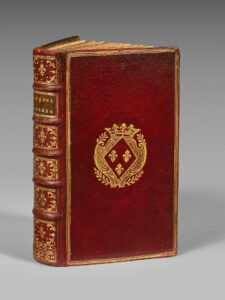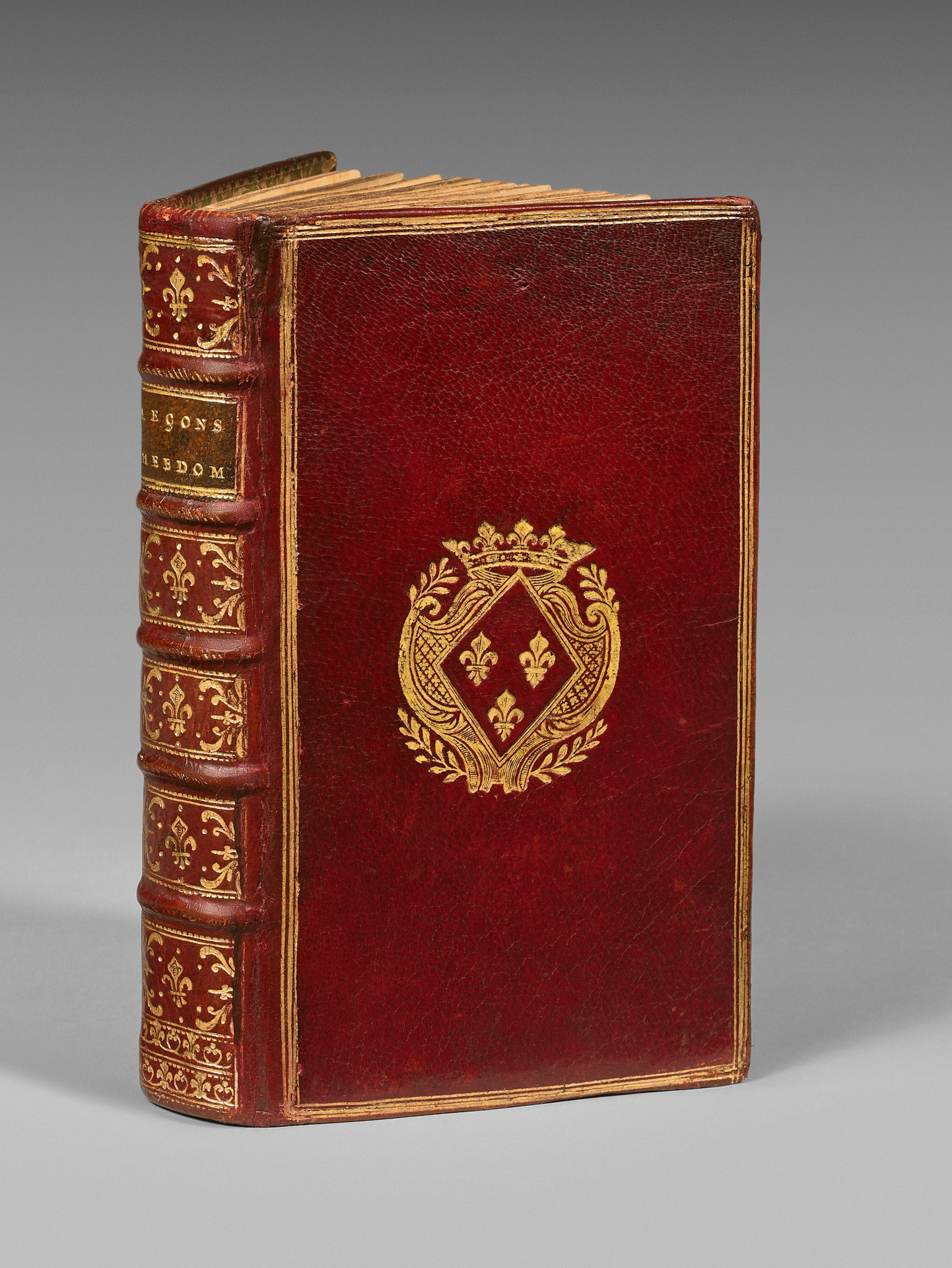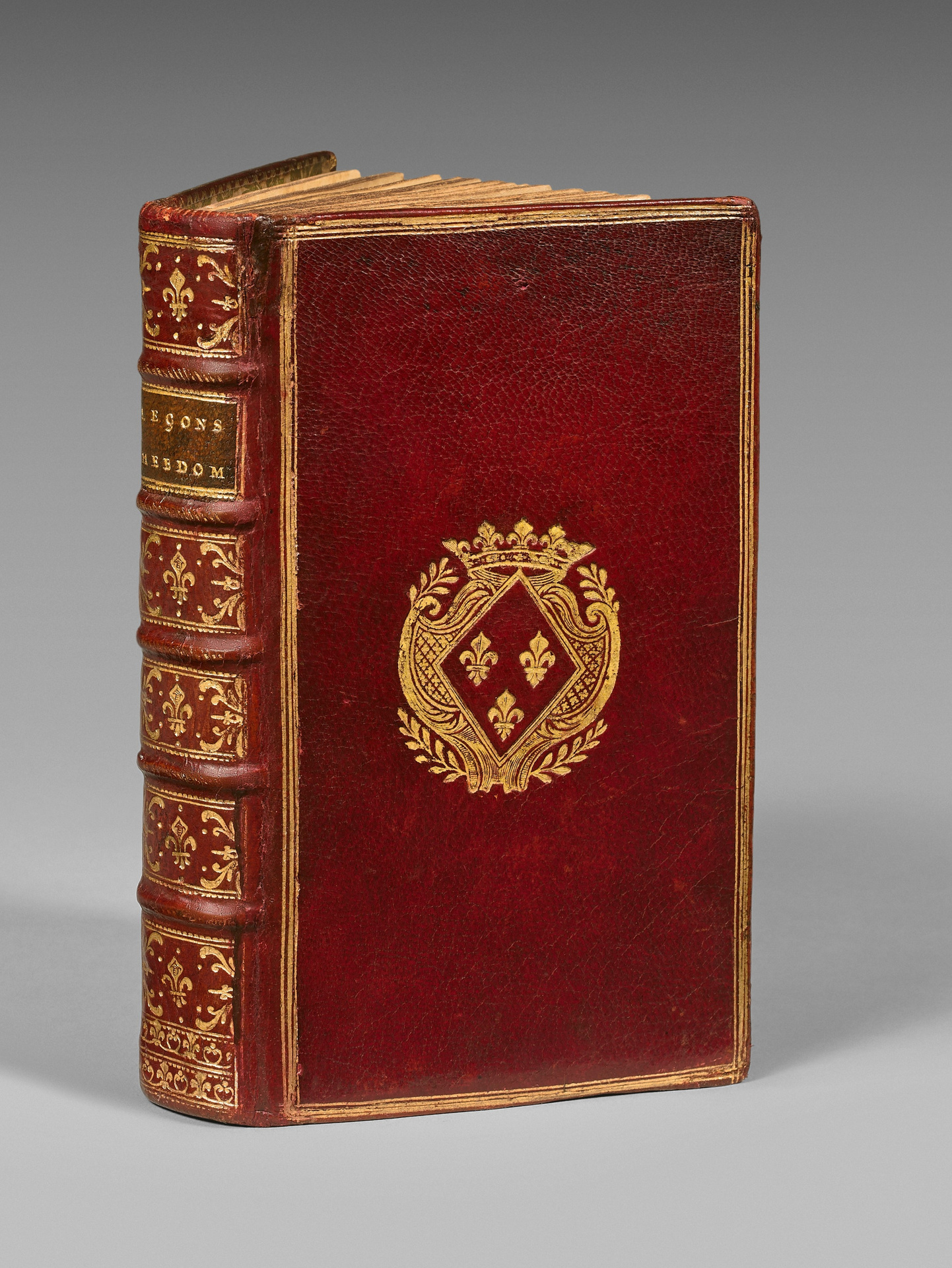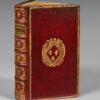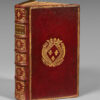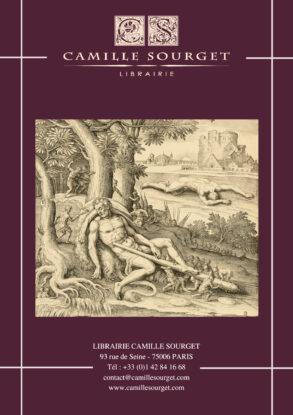Paris, chez l’Auteur et Fetil, 1778.
12mo [168 x 92 mm] of (1) l., vii pp., (1) p., 324 pp., vii pp., (3) pp. Full red morocco, triple gilt fillet around the covers, ribbed spine with fleur-de-lys, gilt fillet on the borders, doublures and endpapers with gilt floral decoration, gilt edges. Contemporary binding with arms.
First definitive edition of the Leçons hebdomadaires de la langue italienne à l’usage des Dames, recorded in the Royal Chamber on January 9, 1778 by the Abbot Bencirechi.
Abbot Bencirechi therefore seems to have a rather worldly experience of teaching. Les Leçons hebdomadaires de la langue italienne à l’usage des Dames, published in 1772, are dedicated to French Ladies, just like the 1778 edition, just slightly different from the previous one. The author deplores that, unlike so many European countries where women do not disdain to speak Italian, the French female audience still shuns a language endowed with so many attractions.
The concern not to tire his pupils is found in the very structure of his book. For fear of boring the Ladies with a too difficult nomenclature, he will give it imperceptibly, where necessary. He begins with a few explanations on Italian pronunciation, for two weeks, followed by the nine parts of the speech or the prayer presented in turn, throughout the following weeks: the article, the noun, the pronoun, the verb, the participle, adverb, preposition, conjunction and interjection.
Always in order not to tire the Ladies too much, and to avoid them having to obtain a dictionary, he writes, after each lesson, two small French-Italian and Italian-French vocabularies. Thus all the words necessary for each version will be explained gradually and at the appropriate time. The choice of words also, taken in their preoccupations and their daily life, will please the Ladies by mixing useful and pleasant knowledge.
With such a method, the presence of a Master will not be necessary, at most once a week, for the correction of the weekly translation, and to acquire good pronunciation and the habit of speaking the language.
For Bencirechi, the three treatises which follow les Leçons seem essential and will be presented entirely in Italian because he assume quite advanced now the Ladies’ knowledge of the language.
1 – When talking about knowing how to choose the right terms, Abbot Bencirechi therefore offers his students Recueil des Synonymes français de l’abbé Girard, applied to Italian.
2 – The art of letter writing, like the one of conversation, is often practiced brilliantly, and naturally, by women who will be able to read the Discours sur les lettres familières with profit. Many Ladies’ Grammars in France offer Advice for Letters, or Sample Letters, for every occasion in life.
3 – Le Précis des Règles de la versification italienn will allow them to appreciate poetry.” (Madeleine Reuillon-Blanquet).
Precious and very rare copy of “the last son of Louis Dauphin” bound in morocco with his arms, “its volumes, according to Olivier, are generally simply bound in marbled or granite-like calf” .
“Her library, which contained works of piety, history and science, was transferred to the National Library; the volumes are generally simply connected, in marbled or granite-like calf. » (Olivier-Hermal).
The copy is not only wearing her coat of arms but also her rare ex-libris drawn by Dezauche present in his some favorite books.
